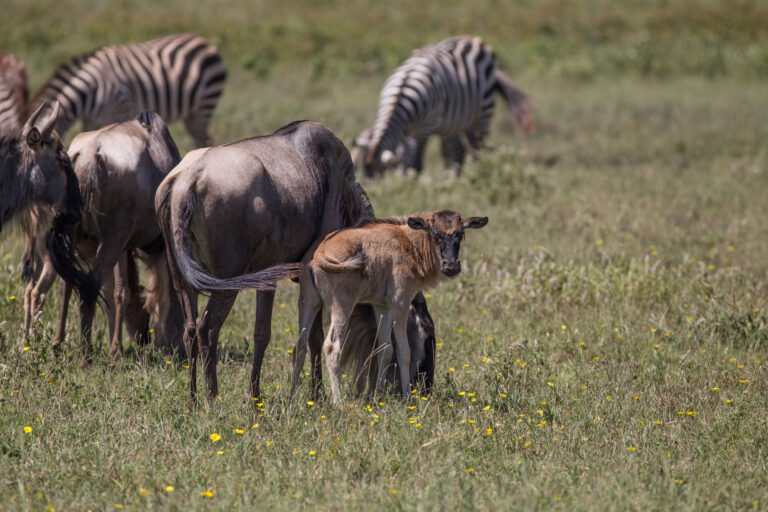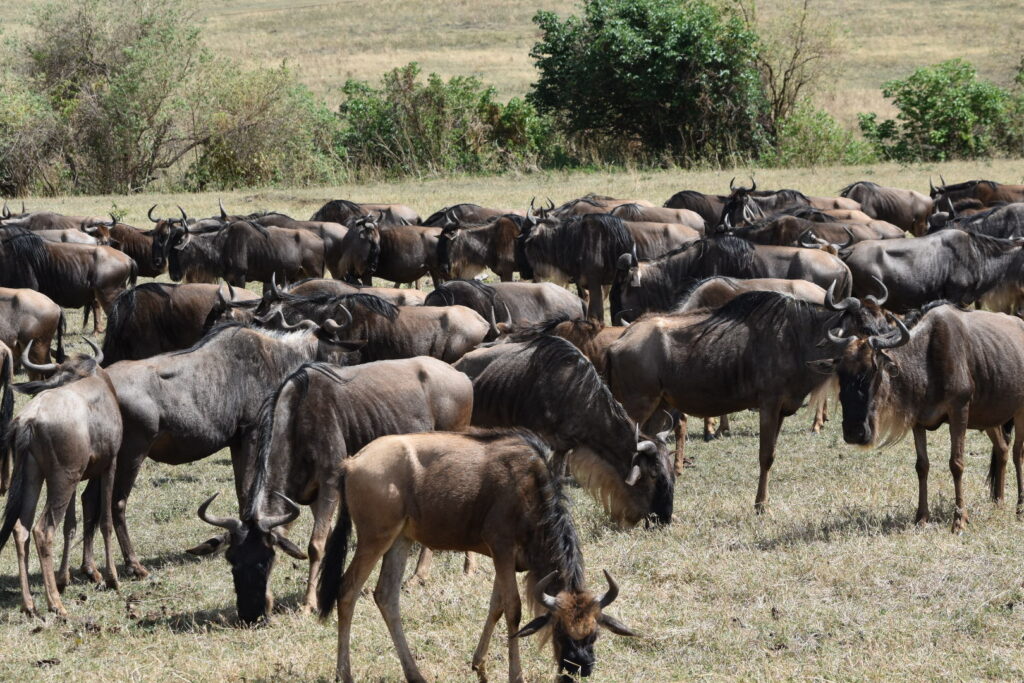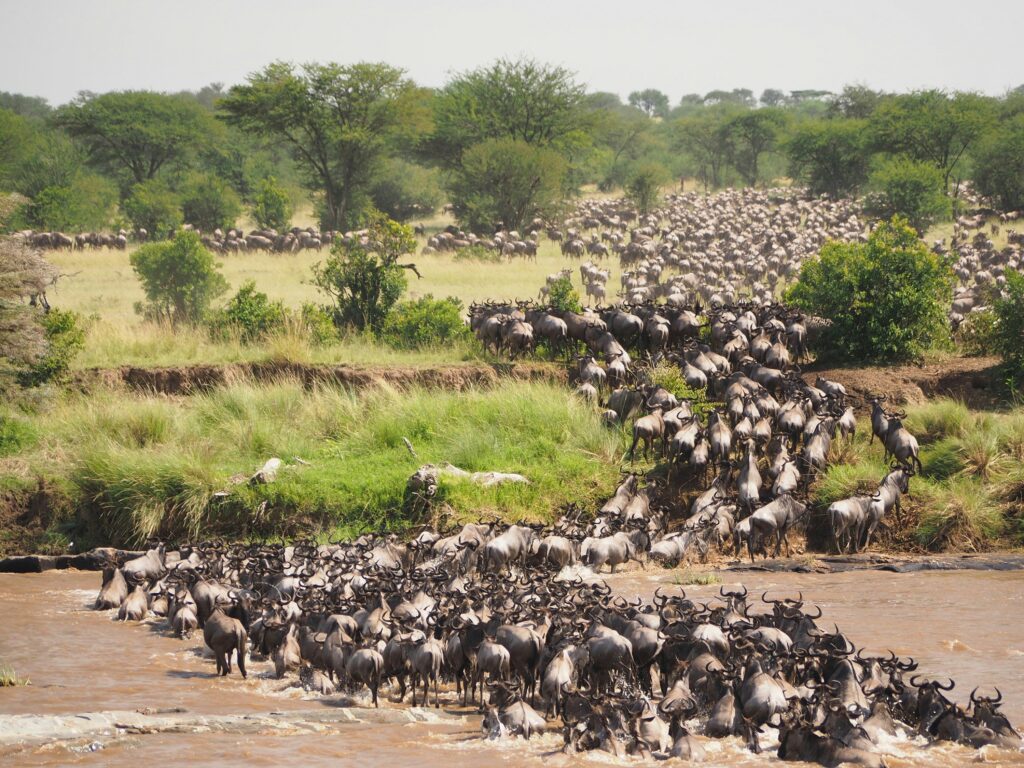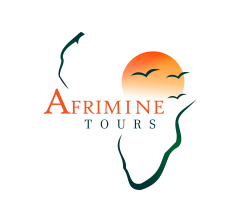Great Migration:
The Greatest Show On Earth

The best time to see newborns (known as the calving season) is around the months of December until March.
| Event | Approximate Time | Place | |||
|---|---|---|---|---|---|
| Calving (Birthing) Season | February to March | Southern Serengeti | |||
| Rutting (Breeding) Season | April to May | Western & Central Serengeti | |||
| Grumeti River Crossings | May to June | Central Serengeti | |||
| Mara River Crossings | July to August | Northern Serengeti & Masai Mara | |||
| On the Move | November to January | Masai Mara & Northern Serengeti to Southern Serengeti |

The Masai Mara National Reserve where the animals finally made it to the fertile feeding grounds to regain their strength.

The migration encompasses not only wildebeest and zebras but also gazelles and antelopes. At each location, they join other species such as Grant’s gazelle, Thompson’s gazelle, eland, topi, and impala.
The spectacle of these vast herds traversing the landscape together is an awe-inspiring sight!
The Great Migration in East Africa is the largest migration of land mammals on Earth. It is an integral component of the Serengeti-Mara ecosystem, essential for the survival and health of the animals involved. Additionally, it is a significant draw for those on safari and ranks as one of the top places to visit in the area. The most breathtaking view is the massive herds of wildebeest and zebras traversing the Mara River, with crocodiles lurking for an opportunity to hunt.
A Month-by-Month Breakdown
of the Great Migration
It is clear that climate change has led to changes in the regularity and predictability of the rainy seasons in Tanzania and Kenya. Rains can be late or early, throwing the whole wildebeest calendar out of sync. It is crucial to allocate as much time as possible for safari. You cannot fly in for two nights, see a river crossing and fly out again – nature simply doesn’t work that way.
This is a very general guideline for where the herds are during the year – bearing in mind that the entire Gnu Migration is triggered by rain, which can be early, late or on time:
January
In January, the herds are in Tanzania’s Serengeti National Park. They move south from the north-east region and into the area near Lake Ndutu. The Serengeti is not fenced, so the herds are free to move where they can find grazing. It is important to remember that although up to two million wildebeest, zebra and antelope form the Serengeti Migration, they are not all in a single herd. It is a fact that animals break up into mega-herds of thousands or hundreds of individuals at a time.
February to March
February to March is calving season. Over 8,000 wildebeest babies are born each day. Prepare yourself for wobbly calves and heartbreak as predators swoop in. The Serengeti’s big cats dominate, but hit-and-run jackals, packs of wild dog and hyena clans add to the spectacle. This ballad is bittersweet. The circle of life is played out as a live-action drama.
The short rainy season (Nov–Dec) produces good grazing, and the herds feed frenziedly and remain in the Serengeti’s southern plains until they slowly start moving west in March.
April
In April, it’s the start of the long rains (Apr–May) and the herds move north-west towards the Moru and Simba Kopjes. The action-packed rutting (breeding) season is in full swing. Males compete for the right to mate with receptive females in testosterone-fuelled jousts.
May
In May the massed herds are on the move. Huge columns of up to 40 kilometres in length can be seen as the wildebeest funnel up into the central Serengeti. Everyone is moving a lot quicker now that the calves are stronger.
June
From June, the wildebeest are in the central Serengeti and getting ready for the toughest part of their odyssey. The herds have definitely split up, with some already crossing the Grumeti River.
July
The Great Migration reached the Grumeti region and northern parts of the Serengeti in July. They are now looking closely at the treacherous waters of the Mara River, which they must cross into Kenya. It’s because of the huge Nile crocodiles!
As we have made clear, it is impossible to accurately predict river crossings – they depend entirely on the rains and the often unpredictable wildebeest themselves. Book your Wildebeest Migration safari in Tanzania up to a year in advance. This is the only way to guarantee a lodge on or as close to the river as possible. This will cut down on travel time to lookout points. Wildebeest do have historical crossing areas. You will spend days staked out in the hope of seeing the action. Choose a mobile safari camp that moves with the Migration to ensure you’re in the right place at the right time.
August
You should definitely go in August to witness the dramatic river crossings from the northern Serengeti into the Masai Mara.
September
In September, the herds break up into smaller groups, as not all the wildebeest migrate into Kenya. The northern Serengeti is home to less than half of the animals, with the rest spread across the Masai Mara. You can still see wildebeests in the Serengeti, just not the mega-herds. The Masai Mara is the best place to witness the migration in September.
October
You should know that from October, the best bet is still the Masai Mara. But be aware that it is a far smaller reserve than the Serengeti and you may encounter a lot of other visitors.
November
The short rains begin in November, forcing the wildebeest to leave the bare grasslands of the Masai Mara and return to the rejuvenated Serengeti. Remember: the rain can be late or early, which is also unpredictable.
The herds are on the move and can be seen around the north-eastern parts of the Serengeti. They will split into smaller groups for their journey southward.
Africa is not just hot – the rain can cool things down dramatically. You will be out on early morning and late afternoon game drives. These are the times when the sun is at its weakest. You must take at least one pair of trousers, closed shoes that can cope with mud, and a fleece or waterproof jacket.
December
In December, the wildebeest moves south for fresh grazing. It covers the northern and eastern Serengeti to feast and prepare for another 3,000-km odyssey.
Remember these key facts:
- It is an irrefutable fact that the bulk of the migration takes place in the Serengeti.
- It’s a year-round, circular journey.
- River crossings cannot be predicted, but they generally occur between May and August.
- The animals are distributed across a large area, with fore-runners and stragglers.
- The best way to see the river crossing is to spend a full day at a site where the wildebeest have massed. As a keen photographer, you know that the best opportunities occur around midday when the sun and glare are at their harshest. Make the necessary preparations to accommodate this.
